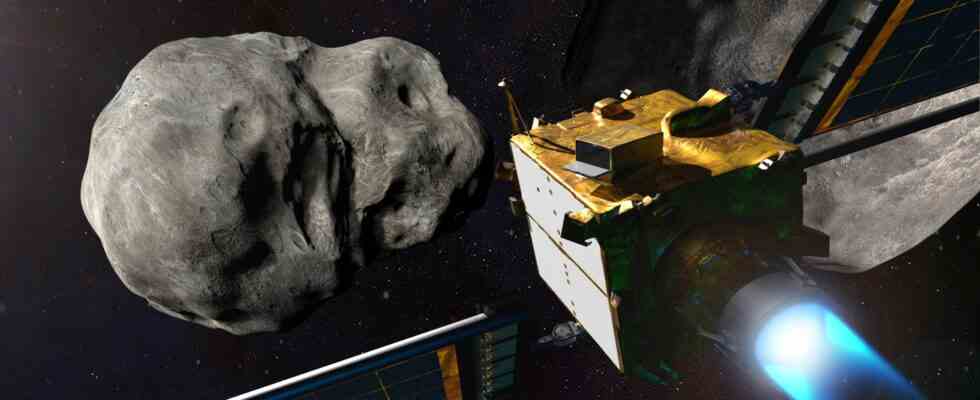As of: 09/26/2022 6:29 p.m
Tonight, a NASA spacecraft will intentionally collide with an asteroid. With the DART mission, the US space agency wants to find out how it can protect the earth from asteroid impacts.
The Double Asteroid Redirection Test (DART) is the first attempt in space history to deflect an asteroid from its trajectory. Put simply, NASA shoots at him with a very fast, satellite-like cube just over a meter across. The mission is therefore appropriately abbreviated to the name DART. The mission and the small spacecraft were developed by the Johns Hopkins University Applied Physics Laboratory in cooperation with NASA. Cost point: more than 300 million US dollars.
The mission began on November 24, 2021. On this day, DART was launched into space on the tip of a Falcon 9 rocket from the private space company SpaceX. Since then, the small cube has been on its way to the 163-metre-wide asteroid Dimorphos, which orbits the even larger asteroid Didymos. Eleven million kilometers lie between the earth and the double asteroid.
The SpaceX Falcon 9 rocket with the probe was launched in November 2021.
Image: dpa
Impact at almost 20 times the speed of sound
DART is scheduled to hit Dimorphos at around 23,800 kilometers per hour at 19:14 Eastern Time (1:16 CEST), shatter and change Dimorphos’ orbit around Didymos through the force of the impact. The space researchers are sure that this will also change the trajectory of the asteroid pair. Both asteroids would thus be diverted from their previous path through space.
The DART spacecraft finds its target automatically with the help of high-resolution cameras, which repeatedly analyze the distance, size and shape of the asteroid and adjust the trajectory of the cube in order not to miss the target. In order to be able to observe the impact and collect measurement data, a small satellite developed by the Italian space agency flies behind.
Success only measurable in a few days
If this test succeeds, NASA would have successfully carried out a central component of its planetary defense system for the first time. The goal behind DART is to be able to protect the earth from dangerous asteroid or comet impacts by not destroying them but directing them away from the earth.
Whether DART was successful, the researchers will know at the earliest three days after the impact. Another mission is scheduled to start in 2024 to examine the two asteroids more closely.

